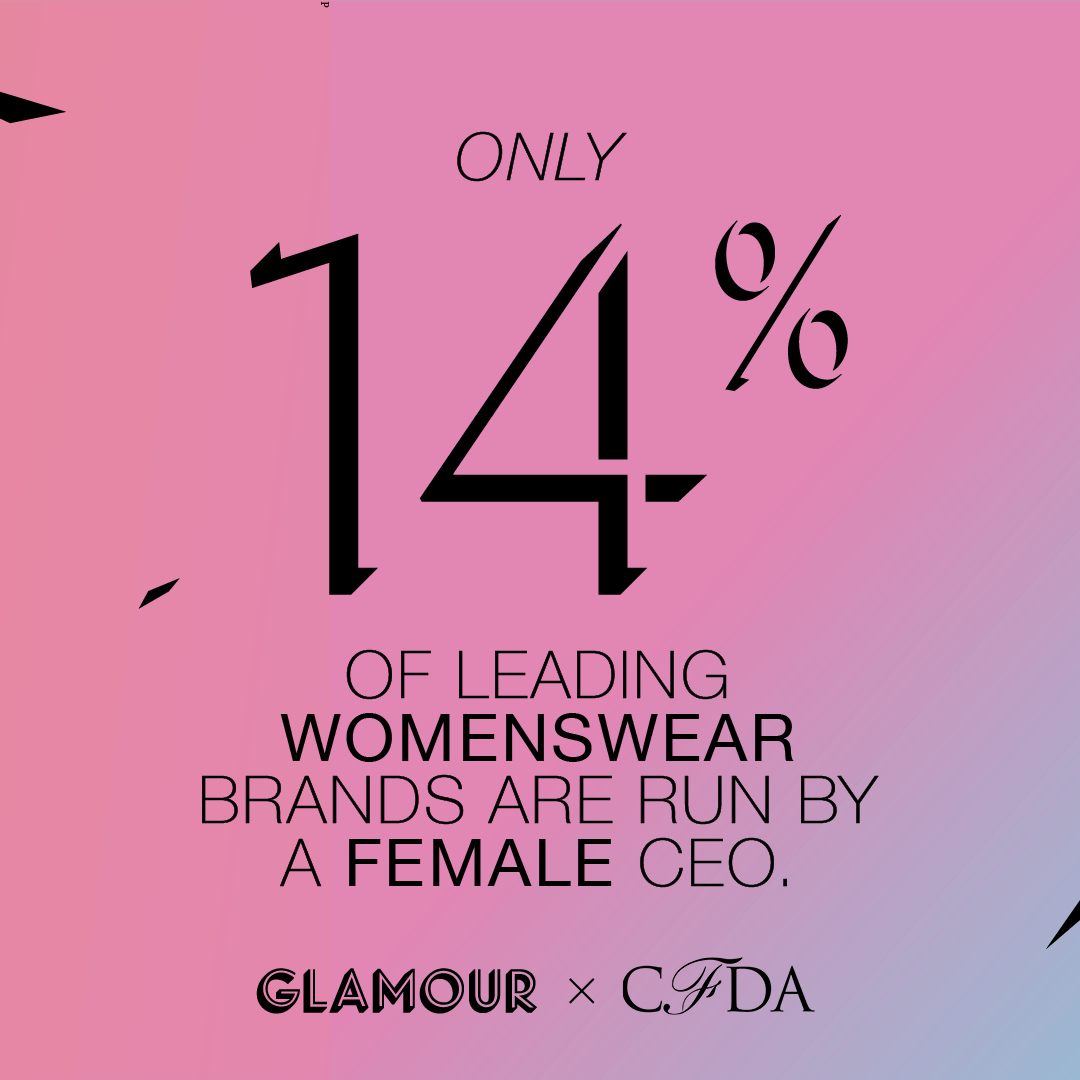The Council of Fashion Designers of America (CFDA) and Glamour joined forces to understand gender inequality in the fashion industry. Months of research culminated in our study, The Glass Runway.
Based on the findings, the CFDA has targeted key action items to foster social and structural change for gender equality in fashion. The CFDA commits to the action items below, and asks our peers to join us in the pathway to gender equality.
- Understand gender diversity as a compelling business advantage
Businesses prosper when built with dynamic and diverse teams, and research shows gender diversity in executive committees is paralleled with better financial performance. The experience, perspective, and skill sets available with diversified teams place any organization at a competitive advantage.
When gender diversity is part of an organization’s infrastructure across all levels, not just the entry pipeline, the ability to better understand the marketplace, more effectively provide influential products or services, and strengthen strategy and operations all optimize.
- Develop transparency and clarity in evaluations, promotions, and compensation
One notorious obstacle of professional advancement is ambiguity in success criteria. Data shows almost 20 percent of men reported being promoted without asking, versus only 5 percent of women1. To combat ambiguity, develop transparency and clarity in each phase of an employee’s life cycle within the workplace from onboarding, to performance reviews, and opportunities for compensation increase.
In the march for equal pay (and status) between women and men, there must be sufficient visibility in how it can be achieved, or at the minimum how it is decided to allow each person the chance to determine if they are in the right place for their career.
- Provide skill-based training and mentorship programs for empowering women
Across all tenures, about one in five women said they received advice and information on how to advance their career, versus one in three men1. As women reach advanced levels in their career, this difference expands1. Additionally, about half of women surveyed reported receiving less support from male leaders, opposed to about one third of men, underscored by fewer women placed in leadership roles while moving towards the top1.
Findings show that gender inequality cannot be fully dismissed as a disparity in ambition between women and men. Across the survey findings, having more women in C-Suite and executive roles in business and placing more women on the boards of large companies and fashion houses were deemed the two most important initiatives to advance gender equality in fashion companies1.
Skill-based trainings and mentorship programs create stronger bonds between people, encourage loyalty to a company, enrich the talents and skills of team members, and encourage long term growth. Training and mentorship are essential to building successful leadership teams and positioning in the industry.
- Utilize unconscious-bias training for those in leadership roles
Fashion encourages progressivity, however it is still an industry comprised of individuals across the gender-bias spectrum. Realizing gender inequality is a true obstacle for women must be recognized first. In interviews, all women stated gender inequality is a problem in fashion versus less than half of men1.
The veritable amount of women in fashion often establishes a false sense of actual gender equality in fashion. Unconscious-bias training allows for judicious recruiting and interview practices, evaluations and promotions, and day-to-day interactions between female and male colleagues, especially so for those in leadership roles with a significant impact on the health and success of an organization.
- Establish work-flexibility policies and programs to balance work and life needs
The myth of work-life balance has often faced women to make tough decisions about the future of their career. Research shows many women believe they have to wait until senior tenure to have children out of concern it will take them out of the running for advancement1. Additionally, one-third of women compared to less than 10 percent of men felt having young children greatly slowed career progression1. Layered on to these facts are the cultural pressures and shifting priorities women face in the workplace.
Incorporating work-flexibility policies and programs not only serves an ethical purpose, but also provides material resources for women in fashion to honor their personal well being without compromising their dedication to professional advancement. Work-flexibility is a fundamental resource for all women from mothers, caregivers, partners, and entrepreneurs on the path to a stronger fashion future.
For a shareable version of The Glass Runway: Action Items for Gender Equality document, click here.
[1] CFDA & Glamour Glass Runway Study



